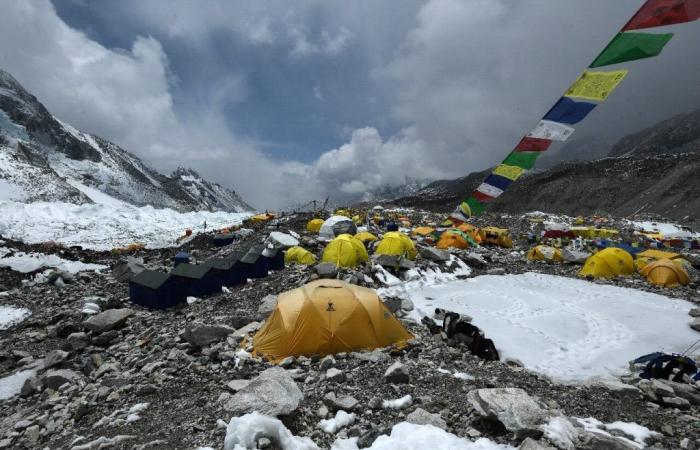Par
Editorial News
Published on
June 28, 2024 at 10:58 a.m.
See my news
Follow News
Among those who have climbed the highest peak in the Himalayas this year is a team whose goal was not to reach the 8,849-metre summit, but to bring down the forgotten remains.
Risking their lives, the volunteers have already recovered five frozen bodies, including one in the form of a skeleton, then brought back to Kathmandu, the Nepalese capital.
Two have been pre-identified pending “detailed testing” to confirm their identities, according to Rakesh Gurung of Nepal’s tourism ministry. Those who cannot be identified will be probably cremated.
Corpses as landmarks nicknamed “Green Boots” or “Sleeping Beauty”
This Nepalese campaign aimed at cleaning Everest and neighboring peaksLhotse and Nuptse, is macabre, difficult and dangerous.
“Because of the effects of global warming, bodies and waste are becoming more and more visible as the snow cover decreases,” says theAFP Aditya Karki, a major in the Nepalese army leading a team of 12 soldiers and 18 climbers.
More than 300 people died on the summit since expeditions began in the 1920s, including eight in the last season alone.
Many bodies remained there, some hidden by snow or in deep crevicesOthers, still dressed in their colorful climbing gear, have become landmarks to the summit for climbers, given nicknames like “Green Boots” or “Sleeping Beauty.”
“The Death Zone”
There is a psychological effect. People believe they are entering divine territory when they climb mountains, but if they see dead bodies along the way, it can have a negative effect.
Many bodies are found in the ” death zone “, where low oxygen levels increase the risk of acute mountain sickness and eventually become fatal beyond a certain duration.
Corpses, in the ice, extracted with an ax
It took 11 hours to free one of the corpses stuck in ice up to the torso, and to use hot water to free it and extract it with an axe.
“It’s extremely difficult,” insists Tshiring Jangbu Sherpa, who led the body recovery expedition. “Getting the body out is one thing, getting it down is another.”
According to the guide, some of the bodies are still almost as they were at the time of their death, dressed in their full equipment, with crampons and harness. One of them, intact, has just lost a glove.
A considerable financial cost
High altitude corpse recovery remains a controversial subject in the mountaineering community. The operation is very expensive and up to eight rescuers are needed for each body.
At high altitude, it is difficult to carry heavy loads, but a corpse can weigh more than 100 kilos. For Aditya Karki, however, this effort is necessary.
Mountains into cemeteries?
“We have to bring them back as much as possible,” he says. “If we continue to leave them behind, our mountains will turn into cemeteries.”
During missions, the bodies are often wrapped in a bag, then descended by sleigh.
A body found near the summit of Lhotse, the fourth highest in the world at 8,516 metres, was one of the most difficult to descend, Tshiring Jangbu Sherpa said.
The body was frozen, the hands and legs spread. We had to carry him as is to camp 3, and only then could he be transferred to a sled.
Still many secrets.
If the body of George Mallory, a British mountaineer who disappeared in 1924, was finally found in 1999, that of his climbing companion, Andrew Irvine, was never located. Nor could their camera, which could provide proof of a successful ascent that could potentially rewrite mountaineering history.
11 tons of waste
This campaign mobilized 171 guides and Nepalese porters to bring back 11 tons of waste.
Tents fluorescent, climbing equipment out of order, empty gas bottles and even human excrement litter the road leading to the summit.
“The mountains have given us so many opportunities,” observes Tshiring Jangbu Sherpa, “we have to give it back to them, we have to remove the waste and the bodies.”
Now, shipments are forced to dispose of the waste they produce. “This year’s trash should be brought back by the mountain people,” emphasizes Mr. Karki. “But who will bring back the old waste? »
Source : AFP
Follow all the news from your favorite cities and media by subscribing to Mon -.






